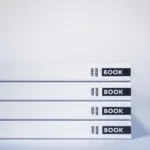
How to Learn From Criticism and Rejection

There is no better teacher than criticism. And rejection, no matter what form it takes, is just a form of criticism. While true criticism usually falls into two camps — constructive or critical. There are things that can be learned from all types of feedback, even if it feels cruel or unconstructive at the time.
Criticism and rejection don’t have to be negatives, even when they come across that way. In fact, all rejection is simply a learning opportunity. It’s something you can internalise to improve and grow as a writer, or learn more about how certain types of readers respond to your work. There are many factors at play when someone doesn’t like what you’ve created, and understanding why rejection happens is the first step in learning from it.
If someone doesn’t like something about your work, take the time to think about why. Was there something missing? Did they not connect with the characters or plot? Was there too much description, or not enough? Or was this book just not for them? Reading between the lines, even when their criticism is harsh, is how you’ll stop looking at criticism as a negative, and see it as an opportunity instead.
Rejection is just part of the process
As horrible as it is to say, rejection and criticism are part of the writing process if you choose to open your work to readers. Unless you write solely for your own pleasure (a perfectly valid choice), you will always come up against people who don’t like, or just aren’t interested in your work.
When you really come to terms with this, it makes dealing with rejection and criticism a lot easier. Your work won’t be for everyone, and that’s ok. It’s not personal, and it’s not a critique of your abilities; it’s simply a fact of life.
There are many factors at play when someone doesn’t like what you’ve created, and learning to deal with them in a healthy way is the first step in keeping your sanity and love of your work when the going gets rough. When you send a query to an agent and you get a rejection letter, they’re not telling you your work doesn’t have value, they’re just telling you your work isn’t for them. The same goes for critics and reviews. Even the harsh ones.
When you share your writing with the world, you open yourself up to being hurt. It’s just a fact of life for writers, and one that is easier to overcome when you accept it. As Ernest Hemingway said:
“There is nothing to writing. All you do is sit down at a typewriter and bleed.”
Ernest Hemingway
The real trick to overcoming rejection and staying in love with your writing is to focus on the process and not on the outcome. The process is the journey and something you can control. Don’t let a fixation on the negatives distract you from the important part. Your words, and the writing journey.

Types of rejection and how to learn from them
Rejection letters
Putting yourself out there and querying agents and publishers is a terrifying part of the writing process. But for those looking to traditionally publish, it’s an an inevitable part of getting your work into the hands of readers.
Rejection letters are unavoidable. There are an infinitesimally small number of writers who have been picked up by the very first agent they queried. So as far as agent rejections go, you’re in good company.
Unfortunately, most rejections will come as a stock letter or email. There’s not a lot of insight you can gain from a stock rejection, but that doesn’t mean that it’s a complete dead end.
Agents and publishers look for specific things. If you get a stock rejection, it’s a good opportunity to take a step back and analyse whether you’re targeting the right people. Does your manuscript fit in with the kinds of books the agent usually represents? Did you query outside of their open submission time? Have popular books changed since you started querying, and do you need to reposition where your work falls in the market? There are a lot of questions you can ask that will give you insight and give your future queries a chance at success.
But, if you get even the slightest bit of customisation in a query rejection, then you need to jump on that, because they are absolute gold for improving your writing and giving your future queries a better chance of success. Any tiny bit of feedback will immediately highlight exactly what stood out to an agent, both the positive and the negative.
Like any writer, I’ve had a lot of rejections in my time. The most valuable letter I ever got was a rejection, because it completely changed the way I looked at my writing. Let’s look at why that was:
Thank you for sharing your manuscript […] with me. I have had the opportunity to review your manuscript, and while I appreciate the effort and dedication you’ve put into it, I regret to inform you that it is not the right fit for my list at this time.
I found your writing to be engaging and well-crafted, with vivid descriptions and an interesting plot. However, I also noticed a few areas where I believe the manuscript could be improved, like pacing in the middle sections and a lack of clarity in some of the character motivations.
With some revision and refinement, I believe your manuscript could have great potential, but I cannot dedicate the effort needed to any new signings at this time. I encourage you to keep writing and refining your craft, and I’m confident that you will find success in the future.
Thank you again for sharing your work with me, and I wish you the best of luck in your writing journey.
The middle section of that rejection held the most valuable advice I ever received. From that, I knew that my areas of weakness were pacing and character motivation; both areas that I could work to improve. I submitted a revised manuscript, and while it was never picked up for publication, that agent remembered my work and suggested me for a ghostwriting job later in the year. It’s the rejection that got me my break into the world of fiction ghostwriting (previously I’d been a non-fiction only writer).
Rejection letters will often highlight areas of weakness. Most often, these are issues with plot pacing, world building, characterisation, and an over-reliance on tropes. By listening to the criticism included in rejection letters, you will improve your writing immensely.

Bad reviews
There is nothing more hurtful than a bad review. When someone picks up your work and doesn’t enjoy it, it can feel personal, and really shake a writer’s confidence.
Of course, everyone covets constructive criticism, but it’s unrealistic to expect that all criticism will be overtly helpful. You’ll never avoid harsh reviews or cruel comments about your work, and avoiding them entirely isn’t always in your best interests. Twenty harsh reviews all sharing the same criticism are far more valuable than a single piece of constructive criticism.
If you plan to publish, you’re writing for readers. There is no better yardstick for how your writing is received than the readers themselves. Good reviews feel great, but they’re often short on information on what parts of your work could have been better. It’s easy to rest on your laurels when the reviews are good, but there is always room for improvement.
When you get bad reviews, they are usually heightened, emotive versions of problems that other readers also noticed, but weren’t deal breakers for them. Sometimes a book might just not be for that person, but that is usually obvious from a review’s contents.
So how can you make those bad, often harsh and seemly un-constructive reviews work for you?
First, do you have more positive than negative reviews? If yes, then you’re probably fine, and it’s just a taste thing.
Second, do your negative reviews share something in common? For instance, was there a message that they didn’t like? Were they confused by similar plot elements? Was there a particular character who they didn’t find believable? If there’s a common thread to the bad reviews, then you’ll be able to determine if it’s just a matter of taste, or if there’s a flaw you can overcome in future editions of your book, or future writing projects.
Third, check if readers are not engaging with your work because they were expecting something different. If enough people leave bad reviews because your work isn’t for them, it’s important to work out why they were reading your book in the first place. Is your blurb misleading? Is your cover the wrong style for your genre? Has it been incorrectly categorised? For instance, if you’ve written a paranormal romance with a werewolf on the cover, but it looks like a horror book, then it stands to reason that those expecting horror will be disappointed when they read something they weren’t looking for.
These bad reviews all come together to give you a really valuable snapshot of why someone might not like your book. Knowing all the reasons lets you pick and choose which are valuable and which you can discard as simply a matter of taste. But please don’t engage with the reviews. Authors shouldn’t insert themselves in reader spaces. Reading and learning from the reviews is fine, but try to overcome the urge to enter reader spaces to defend yourself.
Negative critiques
Putting your work in front of a critique group is like baring your soul. To have your work picked apart by others requires a thick skin.
Critique groups come part and parcel with a certain degree of negativity. Especially since, by its very nature, constructive criticism is subjective. All writers come with varying levels of confidence, so an honest critique that might not phase one writer is not guaranteed to have the same effect on another.
It’s important that criticism within the bounds of a critique group is taken in the spirit in which it is meant. Everyone is there to help the others improve, and you’ll rarely come across someone who is just there to bring people down.
If you join a critique group, you are there to have your work criticised. To some extent, there are ways to go about that, but sometimes harsh truths are necessary. Sugar coating criticism too much doesn’t make it valuable, so realigning your expectations with this in mind is the best way to ensure you get the most out of your experience.
Critique partners are your first barrier on the road to publication. They are the ones who should be unflinchingly honest with you so you can combat any mistakes and inconsistencies early on, before putting it in front of beta readers. It’s the time when you want to be getting those negative criticisms out, in a safe space, filled with people you know want the best for you.

Harsh feedback from beta readers
Beta readers are the frontline of your audience. They are the first people who see a mostly finished draft of your work, and there is nothing more deflating than hearing that they don’t love your work as much as you want them to.
But what you do want them to do is offer honest and unbiased opinions. You won’t do your work any favours by seeking readers you know will just give you glowing praise.
A negative review from a beta reader offers you a snapshot of how a wider variety of readers might feel about your work. Even a scathing review has value if you consider it logically, rather than emotionally. Beta readers are there to help you improve your work, so collaborate with them. It’s the one, rare chance where you can really engage with readers and find out what they did, or didn’t, like about your work and why.
Someone just saying “I hate it” isn’t constructive or helpful. But when you have a beta reader, they’ve already agreed to a form of collaboration, so you are in the prime position of asking them why they hate it. Target your questions, and learn from that criticism. Is it a fundamental flaw in your writing, or are they just not your target audience? Every insight is valuable, even if it’s just for learning how to position your work in the market when it comes time to publish instead of anything fundamental to your writing in and of itself.
Unfortunately, rejection and criticism are part and parcel of the writing and publishing process. But, if you think of it as part of the process and learn to enjoy and learn from it, then you’ll be a much better writer by the end of it.
Take every rejection as an opportunity to learn something new about yourself or your writing. By accepting other perspectives and looking at your work through another lens, even if that lens is particularly critical, you’ll learn a lot about yourself, your process, and your readers.




























